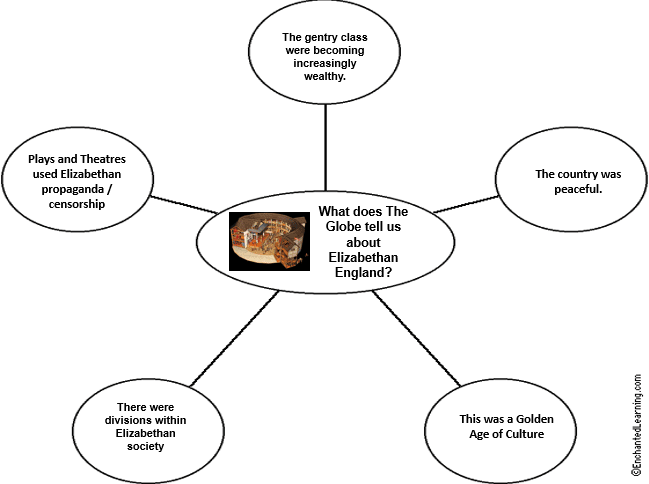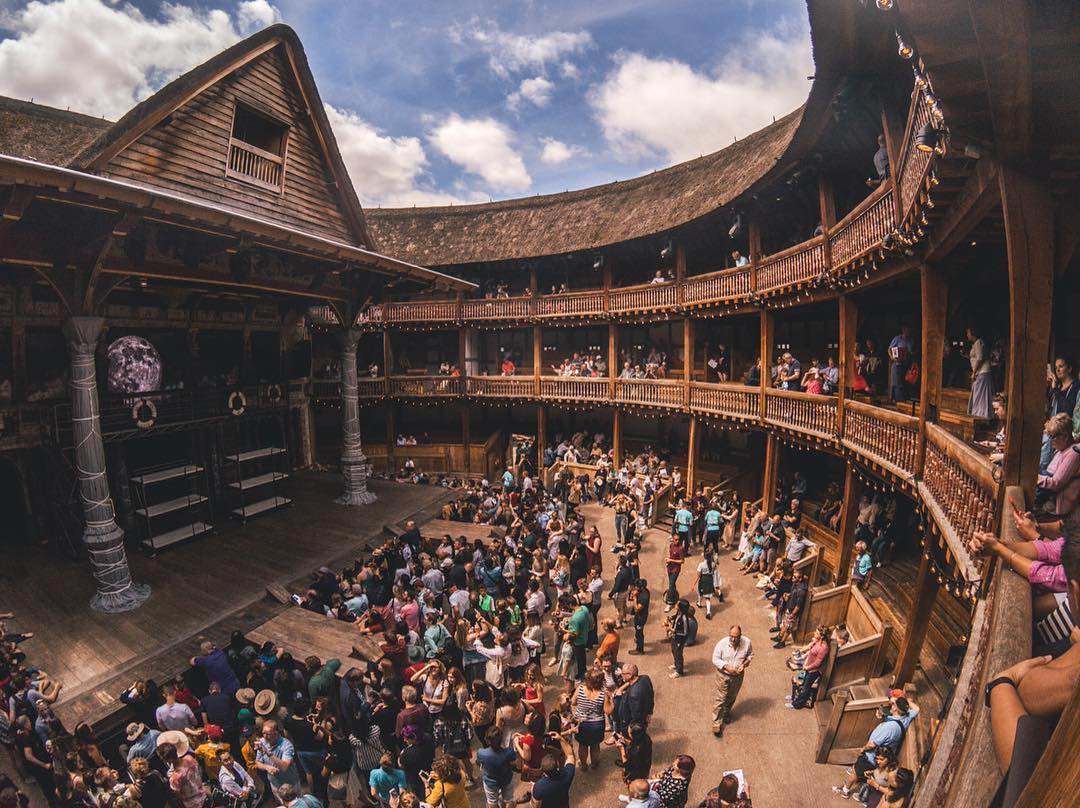
Elizabethan England was known as a golden age of culture, as a result of the fact that during her reign from 1553-1603, the country was relatively peaceful compared to the times previously. As well as this exploration into the New World, and new discoveries resulted in the so called Golden Age. The theatre, in particular the Globe, clearly shows Golden Age of culture, due to the increase of playwrights and going to the theatre as leisure.
The Globe was located in Southwark in London, just outside of the city in order to prevent plague spreading. In the Elizabethan period there was change in the way people viewed plays and those play groups associated with the theatres. During Henry VIII’s reign, plays were usually religious in nature, taking part in streets and then later in inns. Actors were seen as vagabonds, and were usually not highly thought of. Even though some of this mindset remained in the Elizabethan period, it is clear that a golden age in culture occurred due to the fact that new plays began to emerge. Shakespeare was the most well known playwright who wrote plays for the Globe; he was able to have an education due to the changes in the Elizabethan reign were guilds were used to educate young boys. Male literacy had increased to 25% by 1600 from 10% previously showing the change towards a more literate society. As well as this it was a golden age, due to change in costumes during the period. By 1600 it was not unusual for companies to pay £300 for new costumes, and even though there were strict rules to dictate what dress one could wear, this shows how wealthy the plays were becoming. People were going to see more plays, shown by the increases in play attendance, and people of all social class could attend due to the splits in the theatre. The Globe clearly shows this, with the pits for the poorer sections of society and the heaves in three tiers above for the rich.
Even though the Globe and other theatres signify a golden age due to the increase in money but also people attending, they also portray the increase in wealth of the gentry. The Duke of Leicester was patron to the Globe, meaning that he funded plays at the theatre. This change during Elizabeths reign shows that members of her gentry would become patrons and put on plays to please her. This was important to be part of the Queen’s propaganda, as often Shakespeare and Marlowe would write historical plays based on her ancestors. This shows that the gentry were becoming more wealthy, as they could afford to fund the prices at the theatre, such as the £300 costume fee. As a result, the Lord Chamberlains men were formed, who were the acting troupe attached to the Theatre. Richard Burbage was part of this troupe, and was the leader in effect meaning he was the owner. His father James Burbage had built the Globe from the old “Theatre” building further in London. It was based off the coliseum, and built in a grand circle. This further shows an increase in wealth, as the Burbage’s were able to build and get funding for plays. Even though this is an example of increased wealth, this also signifies Golden Age- England was peaceful and prosperous enough for people to have wealth, that stimulated the golden age of literature.
Finally despite the positives, the play also highlights to divisions in society present in Elizabethan England. The Great Chain of Being, was a social hierarchy placing the monarch at top and going down towards the commoner, and this belief signifies the divisions. Divisions in society are clearly seen in the Globe Theatre- with the pits for the commoners. They would buy cheaper tickets, and typically stand in front of the stage. They were known as groundlings and tickets cost 1p, they were subject to the poor weather. This is in stark contrast to the heavens, where members of the gentry would sit and watch. This division was clear due to the layout of the Globe, but further shown by the difference in fashions. The Gentry would have been wearing rich colours to signify wealth, and ruffs, which were fashionable at the time, whereas the groundlings would be in duller and darker clothing. Even though the divisions seem to be clear, the Globe actually arguably shows that change in divisions. Despite the different sections of society been visually and sectioned differently, they are in fact unified. Both the commoner and gentry would have a shared experience of the play. The skillful playwrights would write comedies, tragedies etc in order to appease all sections of the crowed, meaning that all different aspects of society would be able to understand and follow the play. This shows that the play was a universal leisure activity accessibly by most. In this sense, this still shows that the Globe portrays a Golden Age, as for the first time since perhaps the Romans, there is an activity that both commoner and gentry partake in.
Overall, the Globe clearly shows Golden Age. If Elizabethan England was not a Golden Age of Culture, there would not be the volumes of writings from Shakespeare and Marlowe, that make up part of the Enlighten psyche today. As well as this, it shows golden age due to the fact that people have the time to attend the theatre, meaning time is not spent constantly eking out an existence as it had been in previous eras.

